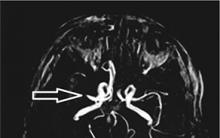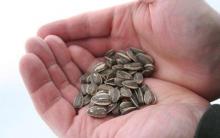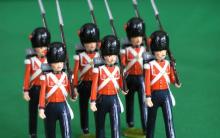The title page is the face of a student's work, which creates the first impression of it. Whether it is good or bad depends on you. For our part, we will tell you in detail and be sure to show you how to write the title page of an essay so as not to lose face in the dirt.
What is the importance of correctly formatting the title page of an abstract? If the title page is formatted incorrectly, then the reviewer, most likely without even reading the text of the main part, will send you back for revision.
Of course, all norms and design standards are specified in GOST and the department manual. However, before you start writing the title page of your essay, ask your teacher if he has any personal preferences in design. Suddenly you came across a not particularly accommodating scientific supervisor.
What exactly should be on the title page of the abstract?
Before you correctly write the title page of your abstract, you need to set the margin sizes:
- right - no less 1.5 cm,
- left – 3 cm,
- top and bottom - by 2 cm.
It is worth checking the margin sizes with the teacher, as he may not adhere to state standards and change the requirements.
The title page must contain:
- name of the university;
- full name of the department;
- name of the discipline;
- topic of scientific work;
- student data (name, course, group number, form of study);
- data of the checking teacher;
- the city where the student studies;
- year of document release.
Numbering rules and font
Although the numbering begins with the title page, the number “1” is not included, and the same applies to the contents page.
In the document, numbering begins from the introduction page with the number “3”.
As a rule, when writing an abstract, you must use a standard font - Times New Roman and size 14 point.
Stages of creating a title page
To begin, conditionally divide the A4 sheet into 4 parts. These are the top, center, right and bottom, and in each of them it is necessary to adhere to certain requirements.
By the way! For our readers there is now a 10% discount on
First part
In the first part at the top of the page in capital letters in the center we write: MINISTRY OF EDUCATION AND SCIENCE OF THE RF. On the next line we indicate the name of the university and below the name of the department in quotes.

Second part
We place the second part in the center: here we write the word “ABSTRACT” in capital letters, and after it we indicate the discipline and topic.

The third part
The third block needs to be aligned to the right. The details of the student and the examiner are written here. The position of the teacher must be indicated:

Fourth part
And the last, fourth part is placed at the very bottom of the page and aligned to the center. Here we indicate the city and year of publication of the abstract.
If the abstract is due at the end of December, then indicate the next year.
It is important to remember that there is no end anywhere.

You understand that writing the title page of an essay correctly is not a difficult science. However, if you don’t want to go to the trouble of “riveting the title card” yourself, then the student service will do this mechanical work for you. All you have to do is subscribe to our telegram channel to keep abreast of student life and current news.
The first page of a document is like a business card. It causes first impressions, which must be positive. This is quite easy to do in Word.
The Microsoft Word text editor provides a wide range of capabilities, most of which people do not use simply because they do not know about their existence. These include a tool for working with the title page. Meanwhile, it allows you to set an original design in a short time. However, you do not have to use standard templates. You can develop your own style and use it in the future without having to create it from scratch each time.
How to insert a cover page
Most objects in the Word editor are added through the Insert tab of the ribbon menu. Creating a document cover is no exception; moreover, the “Title Page” button is the very first in this category and is located in the “Pages” area. When you click it, Word offers many ready-made design options - just select the one you like and click on it to add.
A nice feature of this type of title page insert is the automatic absence of numbering on the first page. Therefore, the question does not even arise.
Interestingly, you can insert a cover page in Word not only at the beginning of the document. When choosing a template, you can right-click on it and select one of the insert options. This feature will be especially relevant if you plan to design not only the cover, but also the beginning of each new section or chapter.

Editing the title page
The added template has customized areas for entering text - headings, subheadings, date, author and much more, depending on the selected template. Unnecessary fields can be easily removed, the rest can be edited in the usual way, changing the font, its color and size, and much more.
The graphic design also has flexible settings. If the title page contains an image, you can replace it by right-clicking and selecting “Change Image”. In this case, a new picture will be inserted immediately with dimensions suitable for design.

If it is a colored substrate, then its color can be changed. Right-click on the background area and use the Style, Fill, and Outline buttons to create your own selection.
After all changes, the updated cover version can be saved for future use in new documents. To do this, go again to the “Insert” menu tab, click on the “Cover Page” button and select “Save selected fragment to cover page collection.”
Create your own template
If you wish, you can create your own title page design from scratch. The numerous “Shapes” and SmartArt objects, also located in the “Insert” menu tab, are perfect for this. Add a graphic update, then right-click on it and select “Add text”.
If the text must be used the same every time, then you can type it right away. Otherwise it's better to use . They are available in the “Developer” menu tab (not available by default, but can be added through the “File” – “Options” – “Customize Ribbon” menu).

When the personal title page template is ready, go to the “Insert” menu again. Find the “Text” area and click the “Express Blocks” button. In the pop-up menu, select “Save the selected fragment to a collection of express blocks.” In the dialog box that opens, enter a name for the new template and for the “Collection” item, select “Cover Page” from the output list.

After saving, your own version will be available through the “Insert” – “Cover Page” menu. If you are unhappy with the result, you can always delete the template.
Today, not only an institute or college student, but every schoolchild is faced with the need to complete an essay. Such research is a presentation of information from various sources on any topic. What should a performer pay attention to when writing such a work?
It, like any scientific work, is written in accordance with the following rules:
- a specific research structure;
- correct design (according to GOST) and many others.
All these issues will be covered in this review.
What is a title page and is it required?
Correct formatting of the abstract, like other requirements, is very important. Any good report consists of certain structural elements - “title”, content, introductory part and many others. It is very important that all these components are present in the study. Below we will look at the issues of title page design.
The first page of any report is mandatory - it is impossible to imagine such work without a title. This structural element performs an informative function - anyone who reads the work, having seen the “title”, should understand where and by whom the research was carried out, what its topic is, and who is the examiner.
What does the title page look like?
What does the title page of an abstract look like? Any main page of a report consists of the following required fields:
- educational institution - located on top;
- type of work and topic - in the center;
- data of the author, checker and reviewer - on the right;
- Information about the city and year is below.
Let's consider the listed components in more detail.
Educational establishment. The full name of the school, college or institute must be provided here. If the research work is carried out at a university, then it is necessary to indicate the department where the teacher who issued the assignment works.
Type of work and topic. In this case, it is important to write that the research performed is an abstract and indicate the topic.
Details of the author, examiner and reviewer. The performer's data is the last name, first name, patronymic, group and course (if the author is a student) or class (if the author is a schoolchild). Information about the inspector is the last name, first name, patronymic and position. When a work has a reviewer, his last name, first name, patronymic and position are written.
If everything is clear with the personalities of the performer and the reviewer, then with the candidacy of the reviewer everything is not so clear. Therefore, the questions arise: “Who is this?” and “When should it be indicated?”
A reviewer is a person who writes a brief description of a report (review).
Typically only higher education institutions require this, so students do not need to list the reviewer in the title. A review of the work should be written by a teacher who is fairly well versed in the topic of the work, but has nothing to do with its implementation.
City and year. Here you need to indicate the year the work was written and the city where the educational institution is located.
How to correctly design a “title card” according to GOST 2018 (with an example)
For an abstract, it is important that all its components are written in accordance with GOST. This is a document containing a list of certain rules by which any scientific work is prepared.
Basic rules for performing work title according to GOST 2018:
- As with other study components, this section primarily uses 14-point Times New Roman. The exception is the type of research and topic - they can be written in size 18. In addition, when writing the first page of a report, you can only use black font color.
- All margins except the left one must be 2 cm. The left margin is 3 cm.
- The text containing information about the performer, checker and reviewer (if any) is aligned to the right. All other text is centered.
- There is no need to number the title page.
The topic and type of the report is written in capital letters. The font format is bold.
Based on the sample, you can create a title page in a few minutes. You can take the template from the manual or ask your teacher.
When a student is preparing a coursework for delivery, one of the most pressing problems that he may encounter is the design of the title page, which, in most cases, is due to ignorance of the general educational GOST, which establishes the basic requirements for the appearance and content of the title page. Another equally important reason is the inability to use a text editor - MS Word.
Therefore, today I will give a number of tips on how to design a title page, I will try to highlight the main mistakes that students make and I will attach several samples that are relevant in 2017-2018.
Design of the title page of coursework according to GOST
First of all, I would like to briefly explain why, when preparing student projects, it is necessary to adhere to any requirements and standards.
A student is a future specialist who will work with drawings, estimates, contracts, acts, regulatory documents and other types of documentation.
Each of these documents has its own form adopted by the state. In order to develop in a future specialist the ability to correctly interact with standardized documents, each alma mater teaches cadets to format their educational works in accordance with an established set of requirements. Due to this, a graduate, trained by coursework and semester papers, reports, etc., when entering a real work environment, can already independently process documents, generate and correct them. Perhaps this is the main reason for the use of GOST by students of modern universities and colleges.
I've gone off topic, so I'll continue.
The need to design a title page in accordance with GOST is due to the fact that since the title page is the “cover” of the document, this is precisely the element that is primarily seen by the supervisor and the examination committee and by which the first impression of this scientific work is created. Imagine that you are given a term paper, the first page of which is not clearly designed (for a better understanding, look at the figure below).
Figure 1 – Example of incorrect design of the coursework title page
What do you see here? Different fonts, no clear identification of the main elements (header, author's name, topic) and other problems, right? Now think about it, would you accept such a document from your student? So, most teachers, having seen only the title page, “wrap up” the student, even if he has prepared an ideal paper as a whole. Therefore, my advice to you is to always adhere to GOST and do not ignore its requirements.
Where to get requirements for the title page
You can always get all the requirements that may be required when completing a course project from your teacher; usually, all the manuals are provided to them immediately before issuing an individual assignment for the course work. If your teacher has not done this himself, ask him - he must give it. Well, if he doesn’t have it either, then go to the pulpit.
In the received methodological manual you will find not only a set of requirements for the design of the title page of the coursework, but you can also find a sample that can be used by copying into your project. If you copy, do not forget to adjust it according to your data.
From my experience, I will offer you my set of requirements, which I use to design title pages, but whether you use them in your practice is up to you to decide.
- Inclusion in the general numbering is mandatory. But under no circumstances should you put a number on it.
- We center the header on the sheet, in it we indicate the name of your educational institution and the name of the department;
- We write the title of the work in capital letters, highlight it in bold, center it on the page (horizontally and vertically);
- After the name, indicate your name, group number, as well as information about your leader, indicating his position;
- At the bottom of the page, indicate your city and the year the work was performed;
- To highlight structural elements, do not use spaces and tabs - use MS Word tools to align text;
- If you need to create a frame, use headers and footers and divide the entire document into separate sections so that the frame does not extend to the next pages of the work;
- Always use Times New Roman font unless otherwise stated in the manual.
To consolidate the knowledge gained, next I will tell you how to use it in practice.
How to make a title page in Word 2010 and 2007
To prepare the main sheet of your document in the MS Word 2007, 2010 and later versions, let's create a new document (I hope you know how to do this). Now we fill out the empty document with the information that you want to reflect here. To begin with, you can fill the document with information without any formatting; we will do that later.
So you should end up with something like this:

Figure 2 – Example of a title page without formatting
Happened? - Well done! Let's continue. Format the document header - select the text and select " Center text alignment" on the panel " Paragraph", we get the following result:

Figure 3 – Example of title header design
Now let's move on to the title of the work - center it in the middle of the sheet and move it down by pressing the " Enter", then open the font control panel and configure the parameters, we get:

Figure 4 – Example of title design

Figure 5 – Example of a correctly designed title page
How to make a title page frame in Word
I hear this question very often from students. To begin with, I want to clarify that there are several types of frames for title pages - these can be GOST frames for making entries in them, or there can be ordinary bounding lines. The first option is done using headers and footers, but I don’t recommend doing them yourself - this is a rather lengthy process and can negatively affect the structure of the entire document, so it’s better to download it:
The second option is much simpler and is done using the MS Word tool - “ Borders and Shading", which is located on the toolbar " Paragraph" The following window will open:

Figure 6 – Borders and shading
Now in this window you need to open the “ Page» indicate the places where the borders of the frame will be placed on the title page - top, bottom, right, left. Also, if necessary, here you can set the thickness and texture of the frame. Then click “ OK", as a result, the title page of the document will be framed in a regular frame:

Figure 7 – Sample title page in frame
Where to find a sample title page for a term paper
The above sample design for the title page is rather a generalized version and it is not always suitable for practical use, since in some cases the requirements of the manual establish other design rules. During my practice, I have seen more than 20 ways to design a title page only for course projects, and how many more can be found for essays, diplomas and other student reporting documents. Different types of title cards differ in the frames, fonts used, location and presence of certain structural elements, etc.
Finding ready-made templates for the title page is not as difficult as it seems. Many manuals already contain a sample title page in the appendix, others contain a link to the place where you can get a sample. You can also get it from your academic teacher, department, download it on the Internet, take it from a manual on another subject, ask a friend, find it in last year’s papers, etc. You can download several samples from the links below:
And finally. The last piece of advice is to make the title page last and preferably in a separate document, so that its formatting features do not accidentally interfere with the design of the main content of the course work.
That's all, good luck with your studies!
Very often, schoolchildren, students, and, sometimes, teachers themselves are faced with how to correctly prepare a particular document for examination. Most often, these are small original works on some scientific topic, samples and examples of which can be downloaded from various sources. There are often cases when, after receiving an assignment, a student cannot clearly imagine where to start the work and how to format it correctly.
Almost everyone faces this question. It’s not enough to write correctly, you also need to correctly draw up the document in accordance with GOST. The student begins to get nervous, choosing the right options for himself in search of the right answer, and therefore loses precious time allotted for writing the work. Even after writing a work, hoping that he wrote it “excellently,” he understands perfectly well that a lot depends on how correctly the title page is designed.
Rules and requirements
 The main requirements for the correct design of the title page of the work lie in the basic document samples, that is standards defined in GOST 7.32–2001. In this regard, before proceeding with registration, it is necessary to familiarize yourself with them in detail, having correctly studied the detailed instructions.
The main requirements for the correct design of the title page of the work lie in the basic document samples, that is standards defined in GOST 7.32–2001. In this regard, before proceeding with registration, it is necessary to familiarize yourself with them in detail, having correctly studied the detailed instructions.
You can find out how to properly format the title page of an essay, college, or university on the Internet. You can also download examples for college students. Almost always the sample turns out to be correct, but nevertheless, information on the design of the title page of an abstract according to GOST can only be found from official GOST documents intended for students to write scientific papers.
Fundamental Points

One of the main parts of the abstract is its content. The author is obliged to format his work so competently that all the information he wants to convey is clear and understandable, clearly structured and presented in the right style. It is advisable to create good subheadings and section titles that clearly express the purpose of a particular topic.
Title page of the abstract according to GOST




For example, the student needs to write the topic of the chapter. After this, you must indicate the paragraph and page number; in other options, you can use subheadings.
If there are more chapters, enter their names; if there are none, write subheadings. After which you should make a description, that is bibliography and conclusion. If you need to write a summary, you should remove all subheadings from the text.
The above concerned the structure of the abstract, but it is still worth returning to the main topic of the article - this is the design. According to established standards, it is possible to describe the correct location of all details on it.
Title page design
- Top center The full name of the educational institution and the name of the department, faculty are located. The phrase “Ministry of Education and Science of the Russian Federation” is also written here, which can sometimes be excluded when creating the title page.
- In the central part or just below the type of title of the work is indicated (report, abstract, project, message). But the name of the discipline is also indicated. You can write the title using quotation marks.
- On the right side - author and scientific director. This block should be located 7-9 spaces below the topic of the abstract.
- At the very bottom in the central part There is a block with the name of the city and the year the work was performed.











Consequences of tubal ligation during caesarean section
The benefits of sunflower seeds for the heart, hair and nerves
Why do my legs give way at the knees?
Name energy: how the patronymic influences fate and the birth program Name patronymic meaning character
First Chinese Emperor